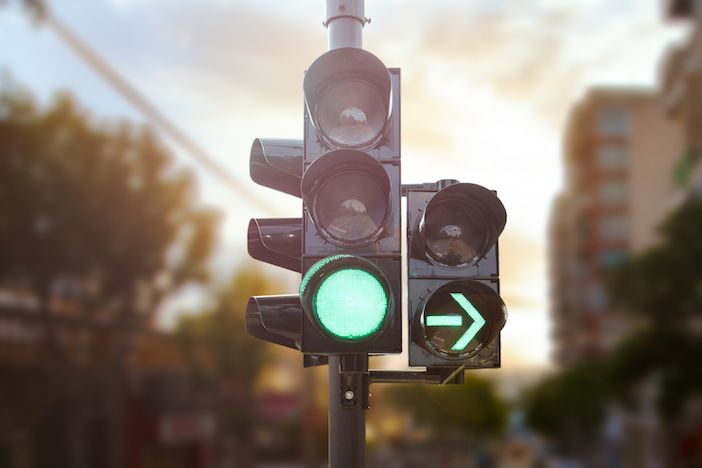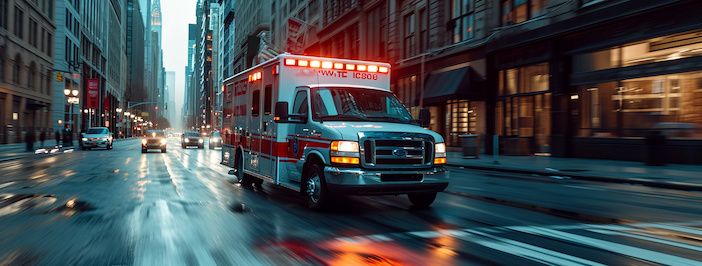 Grace Wang is Distinguished Professor and Associate Dean for Research at the Ying Wu College of Computing at New Jersey Institute of Technology (NJIT). She’s also the Founding Director of the AI Center for Research at NJIT. Here she gives her insight into the new ways in which AI will help to ease traffic congestion
Grace Wang is Distinguished Professor and Associate Dean for Research at the Ying Wu College of Computing at New Jersey Institute of Technology (NJIT). She’s also the Founding Director of the AI Center for Research at NJIT. Here she gives her insight into the new ways in which AI will help to ease traffic congestion
It’s 10 p.m. on a weeknight. You’re driving home from a get-together at a friend’s house on remarkably empty streets. As you pull up to a deserted intersection, you bring the car to a stop at the red light. Seconds go by. Then a full minute. Mild annoyance turns to frustration as you think about how you could nearly be back at this point – there’s practically no one around!
So, what gives? As some drivers are painfully aware, many intersection controls in the U.S. are on timers. Traffic systems are often approximately calibrated to average traffic flow, resulting in poorly timed signals. Poorly timed traffic signals come at a cost: Americans lose a combined 23.7 million hours per day to badly calibrated traffic signals, which can even worsen climate change. This situation may have satisfied city planners decades ago, but new technologies can pave the way for safer and smarter urban traffic management.

Self-driving, autonomous vehicles (AVs) have already made their limited debut in improving fluidity of urban traffic management, but there is still a tremendous opportunity to harness artificial intelligence (AI) to address structural efficiency issues. In the case of the empty intersection, machine-learning algorithms trained on comprehensive traffic datasets could accurately predict and adjust the duration of traffic signals to not only help save drivers precious time, but also help them avoid unintended collisions.
From healthcare to higher education, AI is poised to upend every industry. Yet, in view of America’s rapidly expanding, rapidly aging urban infrastructure, it’s time to reimagine how to unite strategies and implement AI in our growing cities.
Traffic jams and accidents: AI as a dynamic response
Consider another scenario, one that most city-dwellers are familiar with: at a busy intersection, cars crowd one road more than the one it intersects, causing a potentially dangerous traffic buildup in the middle of both streets that at best leads to blaring horns and angry shouts, and at worst can cause crashes, injuries, or fatalities. AI has the capacity to alleviate these woes: it can serve to optimize traffic flow, reduce congestion, and improve overall mobility. It promises to allow accurate monitoring of available public parking and transportation schedules, which can decrease congestion and the likelihood of accidents in and around public transit areas.

Additionally, the ability of a city’s traffic system to carry out automated emergency response protocols after an accident will be crucial in preventing additional damage to lives or property. AI traffic systems can instantly detect accidents and transmit relevant details to local authorities, allowing for faster response times and speeding up the traditionally excruciating process of rerouting traffic. This is known as emergency vehicle preemption (EVP), and in an AI-powered near-future, all manner of traffic sensors, cameras, and counters can be employed to streamline this task.
The public demand factor
How do we arrive at this destination of a more efficient and safer urban transportation system? If previous examples of innovation at this scale are any guide, there’s a strong indication that growing consumer demand will play a key role.
For instance, the advent of the iPhone and its app store drew widespread public enthusiasm, subsequently sparking demand for increased cellular service, faster broadband capabilities, and an entire smartphone ecosystem which hadn’t existed before. Since then, companies have been more incentivized to break into these transformative spaces early, build mobile apps, and build improved hardware to carve out their share of a growing market. In 2021, Apple announced over 1 billion iPhones were in active use – demonstrating the sheer size of the consumer base.

Of course, a single consumer trend alone may not be the sole catalyst for driving AI traffic solutions online. It is possible that a combination of factors, such as improved performance of autonomous vehicles with a track record of reduced accidents, the emergence of a culturally significant vehicle similar in scale to the iPhone’s disruptive success, or the integration of smart roadside infrastructures in US cities that can communicate with vehicles, will collectively contribute to the establishment of a comprehensive ecosystem.
As consumers pay more for cars that run on advanced chips and software, there is growing momentum to move past the traditional approaches of human officers directing traffic, bright-orange traffic cones and barriers, and inaccurate LED displays at train stations. What is clear is that it will take a dedicated effort on behalf of private companies, and the public at large, to deliver us to a safer, faster future for transportation.





